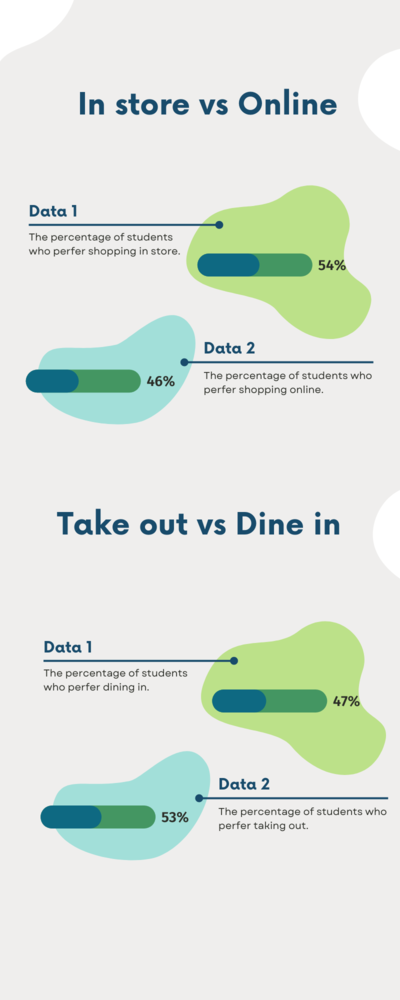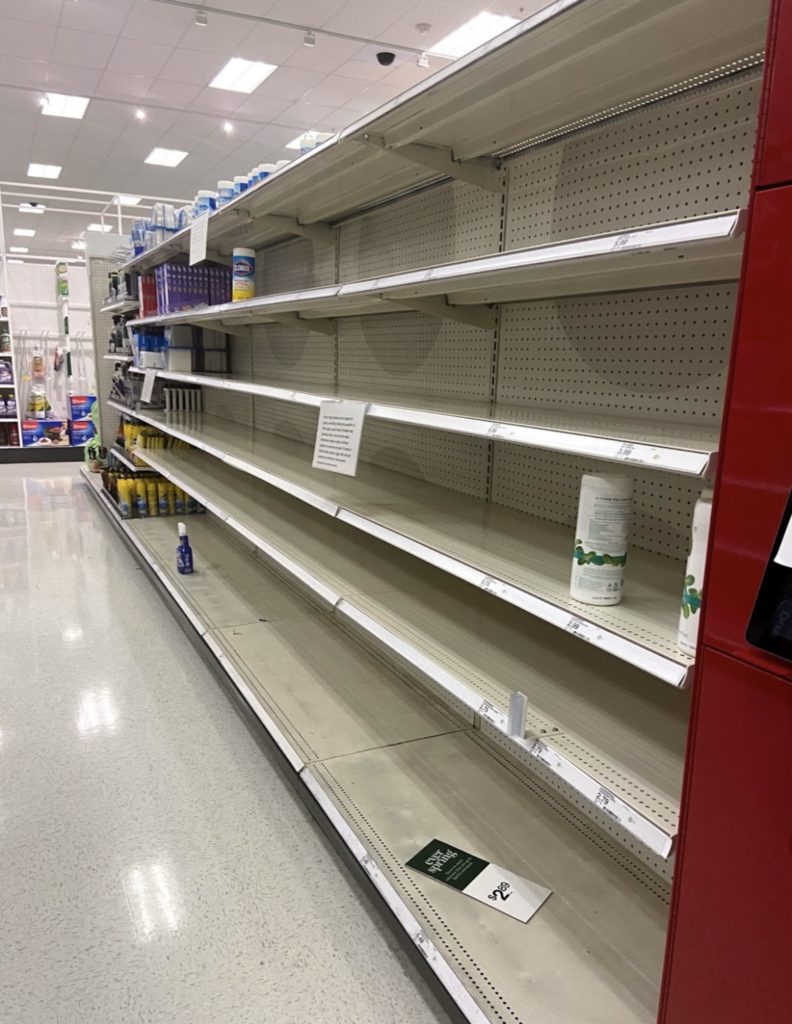Also written by Isa Roth
Take out vs Dine in
As we all know, COVID-19 has changed our lives in many ways. The new cautiousness of society has ended routines in our everyday lives and has replaced them with safer habits. One example of this is the transition from going to public places to staying at home. Instead of taking the risk of becoming infected while eating at a restaurant or shopping at a mall, people have resorted to ordering take-out and shopping online. Although this shift in social norms has harmed businesses and encouraged fast fashion, many previously obscure companies have risen and prospered off of the fear of getting sick. The big question is: has the pandemic changed our lives for the better or for the worse?
The world of eating at your favorite restaurant has changed because of the pandemic. It has changed the way we go to eat, bring home food, etc. Some people have a preferred method on how they want to eat whether they like to have a meal out in a different environment or if you bring it home after a long day. The pandemic has changed the freedom of making that choice, especially with restaurant dining rooms being closed to prevent the spread of Covid-19.

With technology granting access to food delivery services such as DoorDash or GrubHub becoming a predominant way to order and receive food it has become more popular. This has revolutionized the way we are getting food during covid. It is especially helpful in a time where there are quarantine restrictions. Instead of worrying about possibly getting Covid-19 when dining out, you can just have it delivered to your door or pick it up. Restaurants in Littleton, such as J.P. Nori has an option where you can pick up your food and they will set it outside for you when it is ready. This way, you are not engaging with any other people and you can pay over the phone. Restaurants have changed the way they are doing take out to make it contactless and convenient.
When you want to dine in at a restaurant, you may not have the accessibility like we used to before the pandemic. This is for many reasons such as social distancing, staff shortages, or a supply shortage with no food. Dining at a restaurant looks alot different than it used to look. For example, it is hard to go sit down in a restaurant when they are running short on staff due to quarantine or the lack of employees as there is. The wait time to eat out is also much longer because of this turning a quick dinner into a long dining experience. Some restaurants require you to leave your contact information at the front in case you get contact traced from dining in the restaurant. There is a longer wait for a table due to the decrease in space from social distancing. Because of these factors, dining in a restaurant is not the same experience it used to be.
In store vs Online
The way people order clothes has also changed. On our Instagram poll, when asked about their typical method of shopping, 54% of poll takers shopped in person while 46% shopped online. Although more students currently shop in person, there are more people shopping online than before. Before the pandemic, shopping at malls was the way many socialized with friends and purchased clothes. Now, shopping at the mall is less socially acceptable. There are many people at malls that do not wear their masks and they are often very crowded. Malls have become a breeding ground for COVID, so people now have shifted towards online shopping.

Although online shopping is safer and typically more convenient, it does not offer the same experience as shopping at a mall. You do not get the chance to try on clothes and see if they fit. Instead, when you shop online you have to hope for the best that the clothes are in the right size and condition. Online shopping is also bad for the environment. Since most people shop fast fashion, clothes are often shipped from foreign countries which damages the environment. Websites like Shein have become popular during the pandemic. Unfortanutly, their warehouses are in China so more pollution is emitted from ordering their clothes.
Although there are negative aspects of online shopping, it is the healthier method of shopping. COVID is easily transferable in malls as people try on and touch clothes, spreading germs. There are also restaurants in malls which further increases the spread. Mask mandates are also difficult to enforce in a mall, putting in-person shoppers at risk.
Small businesses have been affected by the increase in online shopping. Businesses that are environmentally friendly and boutiques have seen a decline in business. Since small businesses typically do not have an efficient and affordable online shopping system, people have turned to ordering clothes from large corporations that are not as environmentally friendly. Hopefully, once the pandemic ends, people will return to shopping in person and purchasing clothes from businesses that focus on limiting their carbon footprint instead of massive businesses that continue to damage the environment.
As the pandemic continues, many of us cannot help but ask these questions: when will this end? Are these changes for the better, and will these changes become permanent? The habit in our old lives of going out on a daily basis has transformed into a more cautious and isolated lifestyle. There are many upsides and downsides to this new way of living, but is society ready for these changes?
